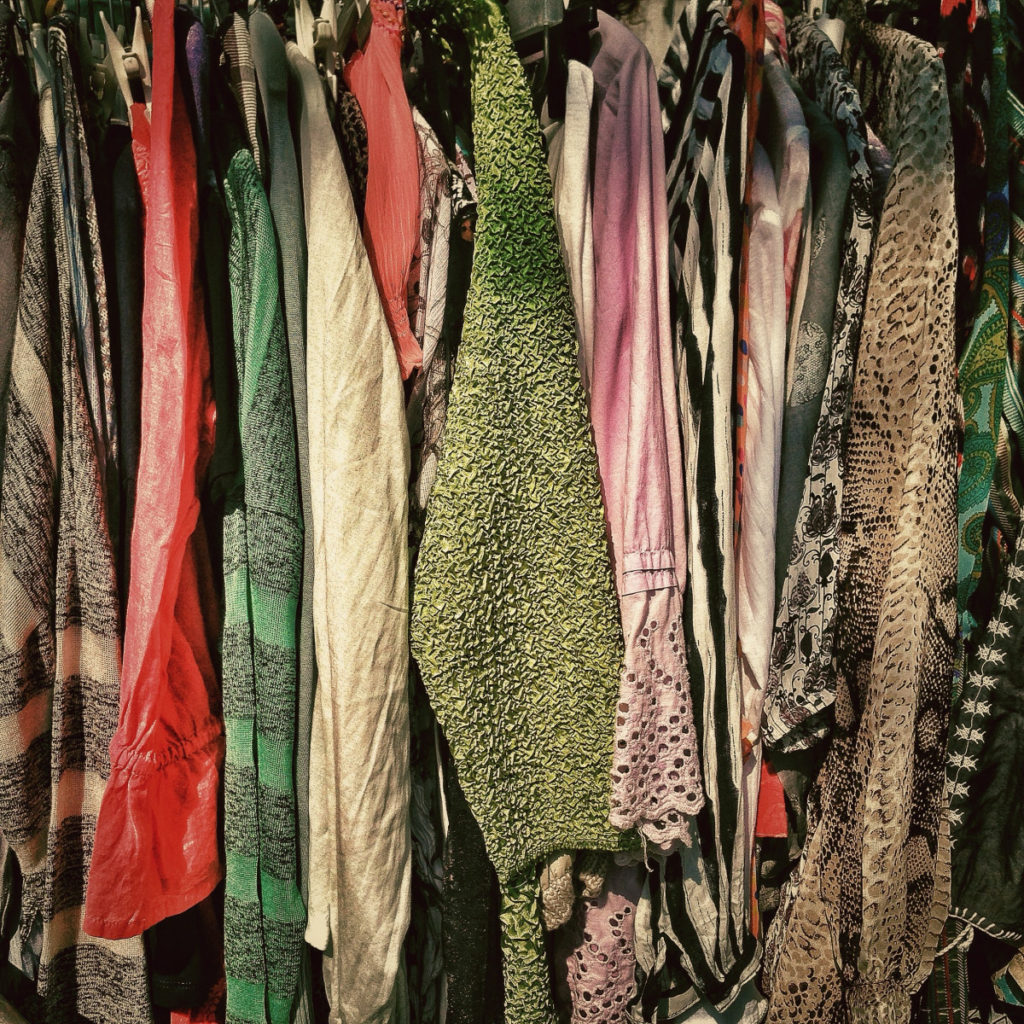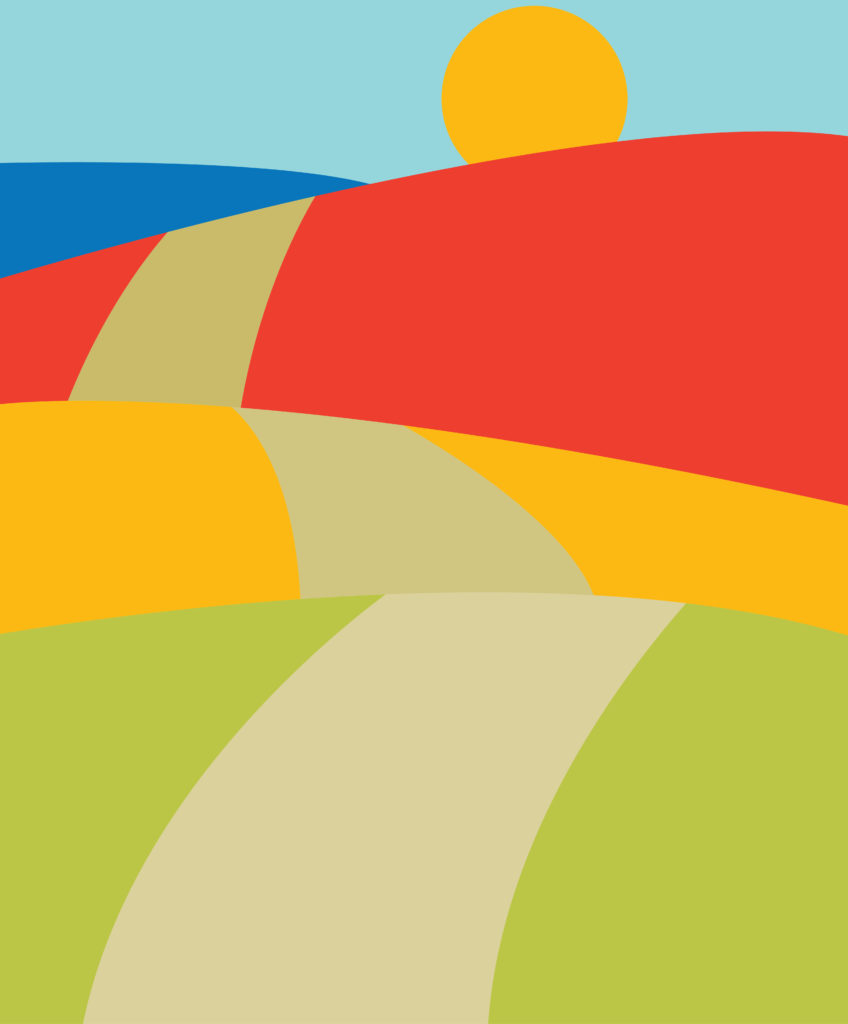Stuff — Our Complicated Relationship with It
by Dana Gaskin Wenig

I grew up, in part, on an intentional community called The Farm in Summertown, Tennessee. The Farm was a collective when I was a kid. No one had their own money. Everyone worked — for money for the community or taking care of the community — and all the money went to the Bank Lady. When someone needed a new pair of glasses or shoes, they would ask the Bank Lady (who we knew by name) and be put on a list of others who needed glasses or shoes. I remember people digging through a pile of shoes looking for a match to one that fit.
For ‘new’ clothes, we would cram into a car and drive to Hohenwald, Tennessee, (close to Pulaski, Tennessee, the birthplace of the Ku Klux Klan), and park in front of a big warehouse. We tried to go on Thursday: Thursday was bale-clipping day.
Six-foot tall, metal-banded bales of compacted garments stood in the center of the room. Shipped to the south from the east coast, these huge, multicolored blocks of fabric were surrounded by the remnants from the Thursday before.
Once the bands were clipped, the bales broke apart slowly and the cement floor was soon two feet deep in red and orange, yellow and green, blue and purple, black and white and grey cotton, polyester, linen, and wool garments of all types and sizes. Track lighting overhead lit the scene as dozens of (mostly) women worked the field: gleaning.
I learned to shop by bending my knees, leaning over at the waist, and digging through fabric like a dog digging a hole. Eyes and hands focused, I’d grip the edge of something interesting and carefully, to avoid tearing it, I’d lift out a flowered blouse, a multi-colored, striped shirt with moons and stars appliquéd on it, purple corduroy pants, a chartreuse green fitted coat that zipped up the front.
A woman at a small table with a scale and a calculator sold us our treasures at twenty-five cents a pound. (Some of those clothing items still exist in my scrap box and have made their way into a crazy quilt I started 26 years ago…)
Fast forward. I’m 61 now, and there are boxes of fabric from side to side and top to bottom under my bed. Some I accumulated in 2020 when I volunteered with Crafters Against Covid-19. We made and donated over 10,000 masks to organizations like prisons, midwifery centers, non-patient facing medical establishments, churches, etc., but some of it’s still there, waiting for me to make a quilt out of it.
I am actively going through my stuff. Before smartphones, we printed duplicate photos and planned to make albums for our only child. Now that seems a bulky gift, and the idea of digitizing is ghastly. My girlfriend offered this solution: use photo boxes, discard (shred?) the photos where someone isn’t looking their best unless it’s dear for some reason, let go of the negatives, and organize by general time period. This is doable for me.
When I sort objects that have become a burden, I make three piles: Keep, Give(to someone I know or post on my local Facebook “Buy Nothing” group), or Donate. Where to donate is another conversation, one I would have to research more to do a good job. I take things to Goodwill. Here’s a link to a recent article about what happens to your Goodwill donation items. (Some of it probably ends up in huge bales that get shipped to places that don’t have much.)
I was supposed to write a piece about how to let go of unnecessary things, but I have cluttered up my assignment with bits of calico and seersucker, quilting cotton and velvet, lace and buttons. For me, things bring a sense of safety and carry memories and a sense of potential unless they suffocate, and can be shared, which is how we used to handle unused clothing when I was younger. A visiting friend would spy a jacket she never saw me wear, I’d offer it, and my closet would be a little lighter. Honestly, I miss those days of easy sharing.
Also, I’ve collected a LOT of beautiful images and cool paper from decades past, and I’d love to teach a collage class if anyone is interested!
Dana Gaskin Wenig is an editor, writer, artist, and teacher. She lives in Shoreline, Washington, with her husband, two dogs, and an elderly cat. Her mom and step-dad live kitty-corner to the back. She is currently learning the practice of sourdough.
